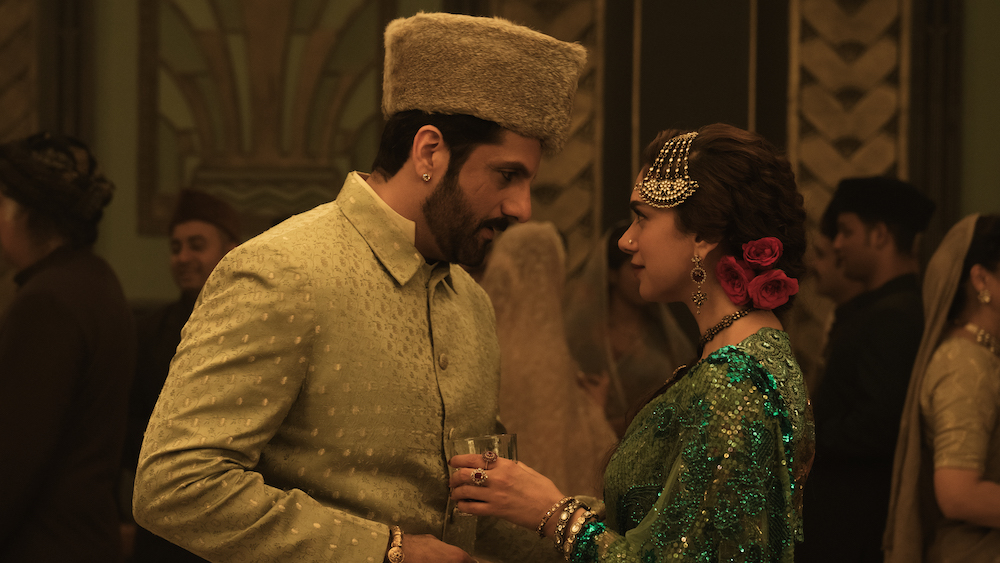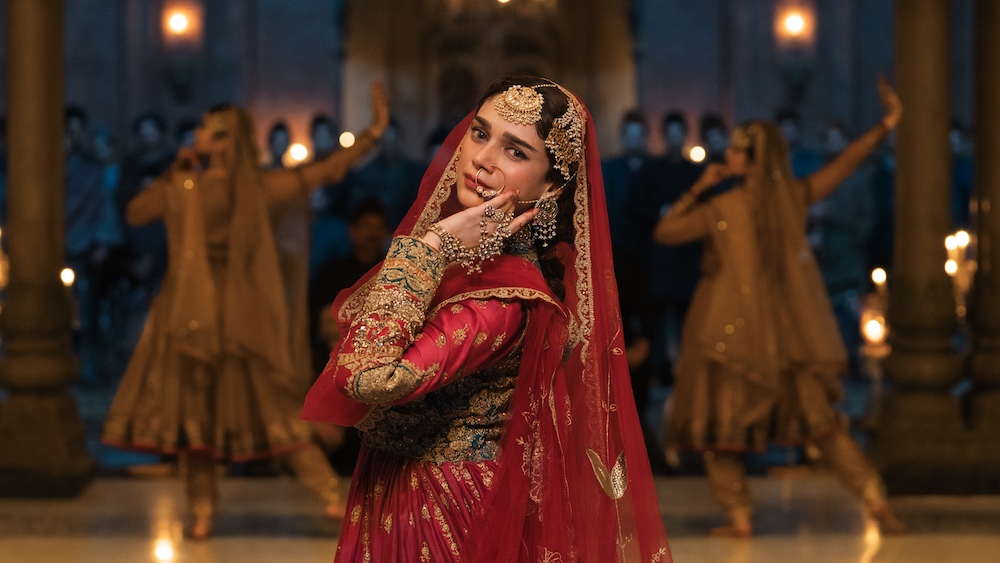With Sanjay Leela Bhansali at the helm, ‘Heeramandi: The Diamond Bazaar’ tells the stories of the tawaif (courtesans) of Heeramandi, set against the backdrop of the Indian freedom struggle in Lahore. Mallikajaan is the queen of the entertainment district, utilizing trickery, deceit, and cold-blooded decision-making to maintain power. Her dancers entertain the local nawabs, extracting bountiful riches from them in patronage. When Fareedan, a girl Mallikajaan sold at a young age, comes back for revenge, their rivalry plunges Heeramandi into a game of social maneuvering, intrigue, and deception.
The Netflix period drama also explores the contributions of the tawaif in the Indian freedom movement, and at the forefront of this narrative is Bibbojaan. Mallikajaan’s daughter and one of the most popular performers of Heeramandi, Bibbojaan covertly supports the anti-British movement in Lahore led by Hamid Mohsin Ali. She regularly supplies parts of her earnings and some of Mallikajaan’s riches to Hamid and his revolutionaries through various means. Bibbojaan’s daring exploits against the British Raj spark curiosity regarding similar historical figures whose deeds may have gone unrecorded. SPOILERS AHEAD
Bibbojaan is Inspired by the Legends of Tawaif Freedom Fighters

In the labyrinth of history, there are tales of women like Bibbojaan that often slip through the cracks, obscured by the dominant narratives of their time. One such obscured tale is that of Azeezunbai, a courtesan whose valor played an unheralded role in the tumultuous events of the 1857 Sepoy Mutiny. Other stories have emerged through archival prospecting, which detail the substantial wealth of the Tawaif and their contributions to funding the Indian struggle for independence.
The story of Azeezunbai is preserved in fragments across archival reports, local legends, and academic papers and offers a glimpse into the hidden contributions of women like her, whose deeds were obscured by the sands of time. Azeezunbai’s story originates in Lucknow, where she fought alongside Indian soldiers in the siege of Cawnpore (Kanpur) during the First War of Indian Independence in 1857. She is said to have been a part of the 1857 Sepoy Mutiny, riding alongside armed soldiers on horseback, adorned in male attire and armed with pistols. She had close relations with the soldiers from a young age, working as an informer, messenger, and possibly even a fighter.
While Azeezunbai may have been closer to the frontlines, other Tawaif contributed substantially to the uprising in 1857. Under the Mughal rule in India, the Tawaif were at the height of their power and influence, boasting royal lineages and being viewed as bastions of arts and culture. They would tutor young royalty in matters of etiquette and communication. During the Sepoy Mutiny, the Twaif were well positioned to fund the rebel forces and provide sanctuary to their soldiers, as seen in the show. Realizing their role in the uprising, the British Raj cracked down on their wealth and social status, terming them as nautch girls and eventually categorizing them as prostitutes in the public conscience.

Gauhar Jaan, a renowned courtesan and successful classical recording artist, wielded significant influence and popularity in the early 20th century. Gauhar was approached by Mahatma Gandhi, who requested a contribution to the Swaraj Fund, aimed at supporting the Indian National Congress and its efforts towards self-governance and independence. Recognizing the importance of Gandhi’s movement, Gauhar Jaan offered her support by organizing a fundraising concert. However, she attached a condition to her participation – she requested that Gandhi himself attend her performance. However, Gandhi was unable to attend, and Gauhar Jaan contributed Rs 12,000 of the Rs 24,000 she raised with the concert.
Bibbojaan, the fictional embodiment of this legacy in ‘Heeramandi: The Diamond Bazaar,’ stands as a testament to the resilience and ingenuity of women like Azeezunbai. She covertly supports the anti-British movement in Lahore like her historical counterparts did in Lucknow. Her clandestine efforts, fueled by a desire for justice and freedom, echo on both a social and patriotic level. Like Azeezunbai, Bibbojaan defied the confines of her societal role to challenge the status quo, taking up arms against the British. And when the opportunity for vengeance and martyrdom arises, Bibbojaan gladly makes the ultimate sacrifice for the cause of freedom.
Read More: Heeramandi The Diamond Bazaar: What Happens to Alam? Will She Die?


You must be logged in to post a comment.